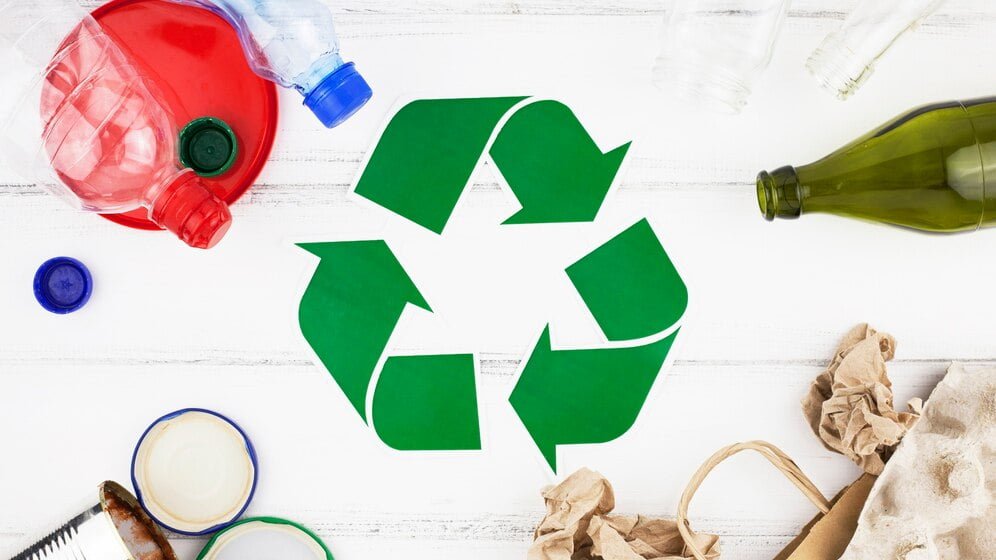Transform Your Waste Management: Discover The Power Of Sustainable Waste Modeling!
by Arnab Dey How to Guides Published on: 03 January 2023 Last Updated on: 07 March 2023

Are you tired of seeing overflowing trash bins and landfills that seem to have no end in sight? Do you ever wonder why it’s so difficult for businesses and organizations to implement a sustainable waste model?
If so, you’re not alone. Many people are fed up with the traditional waste management methods that have been used for decades and are seeking ways to reduce their environmental impact.
Sustainability is a buzzword that has gained significant traction in recent years as more and more organizations realize the importance of operating in an environmentally responsible way.
One area where sustainability is particularly crucial is waste management. When it comes to waste, it’s not just about getting rid of unwanted materials – it’s about finding ways to reduce, reuse, and recycle to minimize our impact on the planet.
In this blog post, we’ll explore the importance of sustainable waste management and offer practical tips on how your organization can adopt a more eco-friendly approach to waste disposal.
Why Is It So Important That Organizations Follow A Sustainable Waste Model?

There are several reasons. For starters, the amount of waste produced by businesses, industries, and other organizations is staggering. According to the Environmental Protection Agency (EPA), the United States generates more than 250 million tons of waste each year, with a significant portion coming from commercial and industrial sources.
This waste not only takes up valuable space in landfills, but it also has the potential to release harmful chemicals and greenhouse gasses into the environment. Organizations can significantly reduce their environmental footprint and mitigate these negative impacts by adopting a sustainable waste model.
In addition to reducing environmental impacts, following sustainable waste management can also have economic benefits. Landfills can be expensive to operate, and the cost of disposing of the waste is only expected to rise in the future.
According to the World Bank, the average person generates about 1.2 pounds of waste daily. If we continue to dispose of our waste in landfills at this rate, we’ll run out of space in just a few decades. By finding ways to reduce, reuse, and recycle, organizations can save money on waste disposal costs and potentially even generate revenue by selling recycled materials.
But How Can Organizations Adopt A Sustainable Waste Model?
5 Tips For Your Organizations Adopt A Sustainable Waste Model

1. Conduct a waste audit
The first step to implementing a sustainable waste model is understanding what types of waste your organization is producing and where it is coming from. Conducting a waste audit can help you identify areas where waste is being generated and opportunities for reduction, reuse, and recycling.
2. Set waste reduction goals
Once you have a better understanding of your organization’s waste stream, you can set specific goals for reducing the amount of waste that is generated. This could include setting targets for recycling rates, reducing the amount of single-use plastics, or finding ways to reuse materials.
3. Implement recycling and composting programs
Recycling and composting are two key components of a sustainable waste model. By setting up recycling bins and composting systems, you can divert a significant portion of your waste away from landfills and into more environmentally-friendly channels.
Recycling bins can be used to collect materials such as paper, cardboard, plastic, and metal, which can then be processed and reused. Composting, on the other hand, involves collecting organic waste, such as food scraps, yard waste, and leaves, and allowing them to break down into nutrient-rich soil through a process called decomposition. There are different composting methods, including in-ground composting, which involves digging a hole in the ground, filling it with organic waste, and then covering it with soil. Over time, the organic matter will break down, and you will be left with nutrient-rich soil that can be used for gardening. If you are interested in learning what is in ground compost, make sure to do some research to discover more about its usage.
4. Encourage employee participation
Engaging employees in your organization’s waste reduction efforts is crucial. Encourage employees to recycle and compost, and provide education and training to help them understand the importance of sustainable waste management.
5. Partner with sustainability-focused vendors
Look for vendors and suppliers who prioritize sustainability in their operations. By partnering with these organizations, you can help reduce your overall environmental impact and support like-minded businesses.
In conclusion
Following sustainable waste, the model is important for the environment and can also have economic benefits for organizations. Businesses and industries can significantly reduce their waste output and minimize their environmental footprint by reducing, reusing, and recycling.
Corporations can take meaningful steps toward a more sustainable future by conducting waste audits, setting waste reduction goals, implementing recycling and composting programs, encouraging employee participation, and partnering with sustainability-focused vendors.
Read Also:







































































































